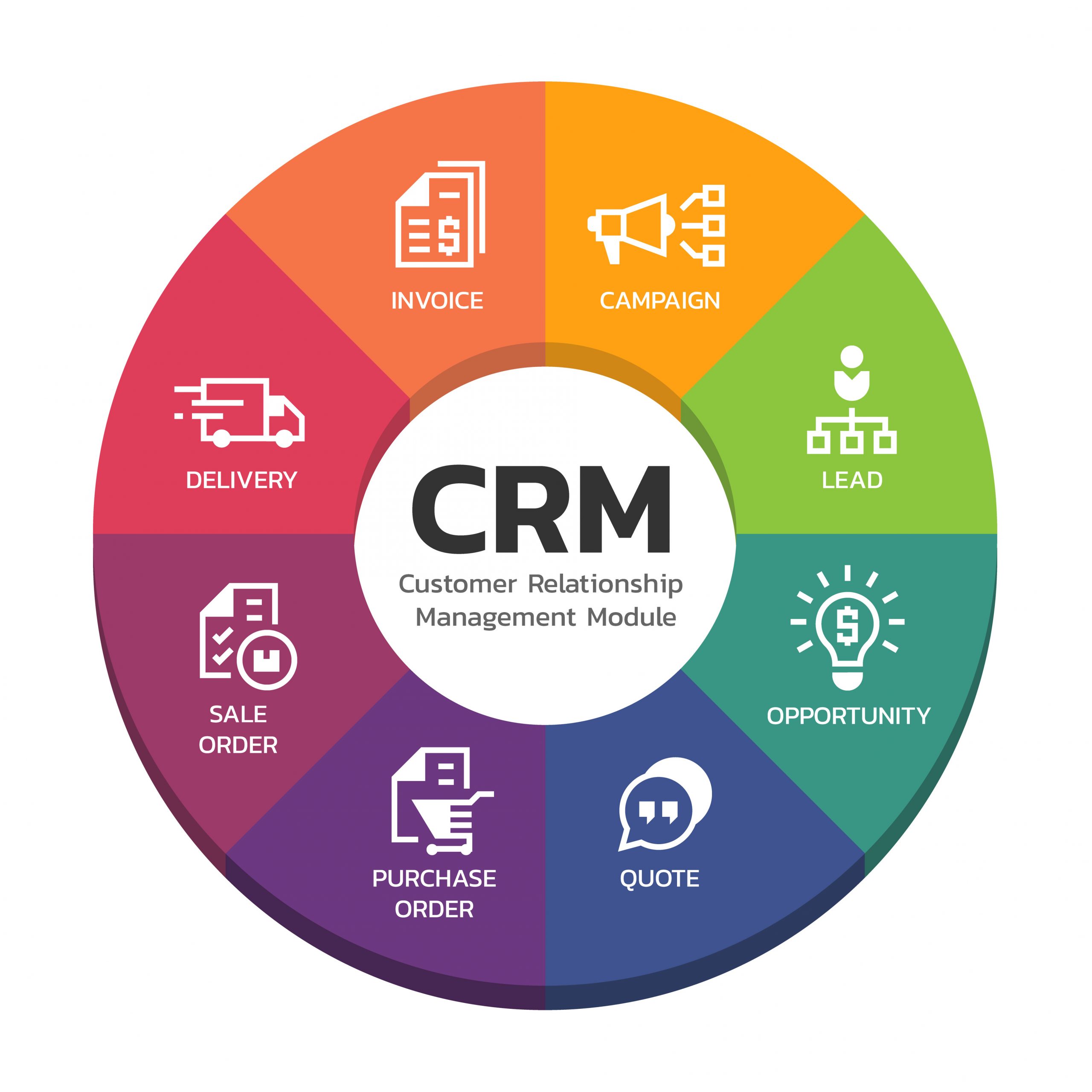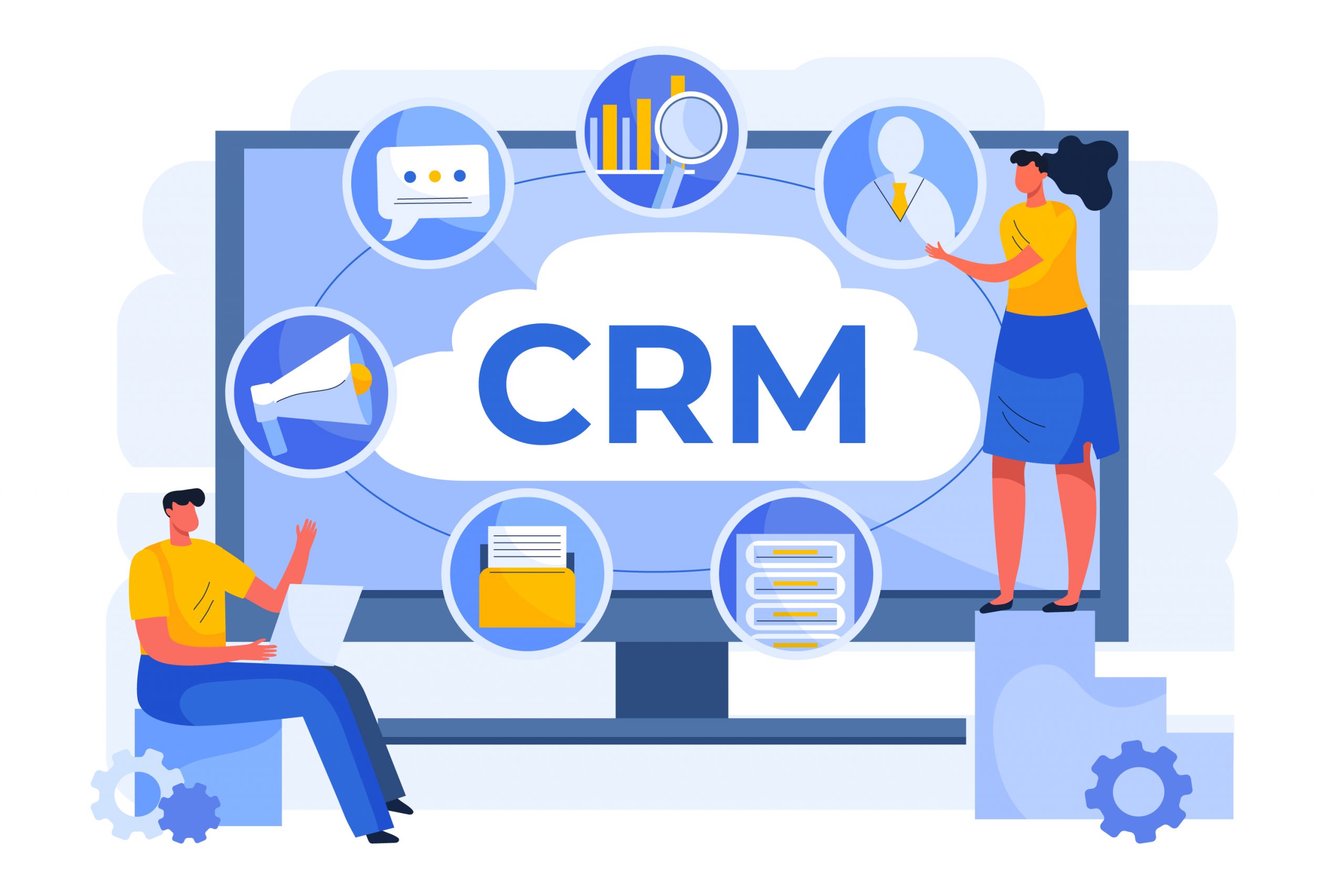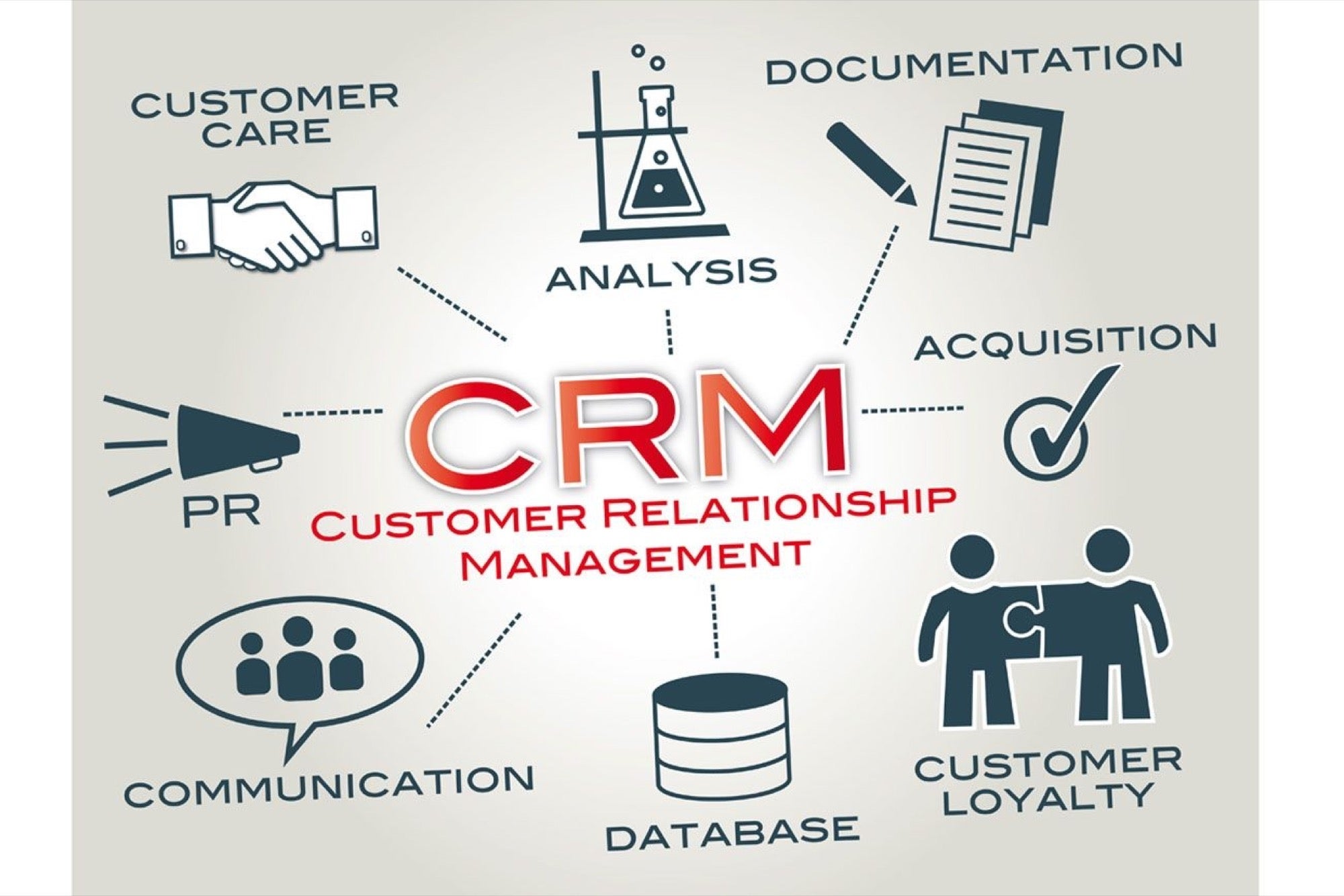In the realm of business, the CRM reigns supreme, orchestrating customer interactions with unparalleled finesse. Its significance lies in the profound impact it wields on nurturing relationships, driving revenue, and propelling businesses towards success.
This comprehensive guide delves into the intricacies of CRM, unraveling its core principles, exploring the diverse types available, and illuminating the best practices for implementation. Moreover, it unveils the power of CRM analytics, integration, and customization, empowering businesses to harness its full potential.
Customer Relationship Management (CRM) Overview
Customer Relationship Management (CRM) refers to the strategies and technologies used to manage interactions with customers and enhance their experience throughout their journey with a business. It involves managing customer data, tracking interactions, and analyzing customer behavior to build stronger relationships and improve business outcomes.
Core Principles and Objectives of CRM
The core principles of CRM include:
- Customer-centricity:Focusing on the needs and preferences of customers.
- Data-driven decision-making:Using customer data to inform business decisions.
- Personalized experiences:Tailoring interactions to individual customer needs.
- Automation:Streamlining processes and reducing manual effort.
The key objectives of CRM are to:
- Improve customer satisfaction and loyalty.
- Increase sales and revenue.
- Reduce customer churn.
- Enhance operational efficiency.
Benefits of Implementing a CRM System
Implementing a CRM system can provide numerous benefits, including:
- Centralized customer data:Consolidating customer information in one accessible location.
- Improved customer segmentation:Identifying and targeting specific customer groups.
- Personalized marketing campaigns:Creating targeted and relevant marketing messages.
- Enhanced customer service:Providing faster and more efficient support.
- Increased sales productivity:Automating tasks and providing insights to sales teams.
- Improved decision-making:Utilizing data and analytics to make informed business decisions.
Types of CRM Systems
CRM systems are designed to manage and enhance customer relationships, and they come in various types to cater to different business needs and preferences.
The three main types of CRM systems are cloud-based, on-premise, and hybrid. Let’s explore each type and its key characteristics:
Cloud-Based CRM
- Hosted and managed by a third-party vendor on remote servers.
- Accessible via the internet, allowing for remote access and collaboration.
- Scalable and flexible, with the ability to add or remove users and features as needed.
- Lower upfront costs compared to on-premise systems.
- Examples: Salesforce, HubSpot, Zoho CRM.
On-Premise CRM
- Installed and managed on the company’s own servers.
- Requires significant upfront investment in hardware, software, and IT support.
- Provides more control and customization options.
- Can be more secure, as data is stored locally.
- Examples: Microsoft Dynamics CRM, SAP CRM, Oracle Siebel CRM.
Hybrid CRM
- Combines elements of both cloud-based and on-premise systems.
- Core CRM functions are hosted in the cloud, while specific modules or data are managed on-premise.
- Offers a balance between flexibility and control.
- Can be more complex to implement and manage.
- Examples: Microsoft Dynamics 365, Salesforce Hybrid.
CRM Implementation and Best Practices

Effective implementation of a CRM system is crucial for maximizing its benefits. Here are the key steps and best practices to ensure a successful CRM implementation:
Key Steps in CRM Implementation, The crm
- Define clear goals and objectives:Determine the specific business outcomes you aim to achieve with the CRM system.
- Select the right CRM system:Evaluate different CRM systems based on your business needs, industry, and budget.
- Configure and customize the system:Tailor the CRM system to align with your business processes and workflows.
- Integrate with other systems:Connect the CRM system with other business applications, such as ERP, marketing automation, and customer support systems.
- Train users:Provide comprehensive training to ensure users understand the system’s functionality and best practices.
- Go live and monitor:Launch the CRM system and monitor its performance to identify areas for improvement.
Best Practices for CRM Effectiveness
- Centralize customer data:Consolidate all customer-related information in the CRM system to gain a comprehensive view of each customer.
- Automate workflows:Streamline processes by automating repetitive tasks, such as lead generation, email campaigns, and customer service requests.
- Track customer interactions:Capture and track all interactions with customers across multiple channels to understand their behavior and preferences.
- Use data analytics:Leverage data from the CRM system to identify trends, improve decision-making, and optimize customer experiences.
- Foster user adoption:Encourage employees to actively use the CRM system by demonstrating its value and providing ongoing support.
Common Challenges and Solutions in CRM Implementation
- Data quality issues:Ensure data accuracy and completeness by implementing data validation and cleaning processes.
- User resistance:Address user concerns and provide training to overcome resistance to change.
- Integration challenges:Carefully plan and execute system integrations to avoid data inconsistencies and performance issues.
- Lack of executive support:Secure buy-in from senior management to ensure resources and support for CRM implementation.
- Insufficient training:Provide adequate training to users to ensure they are proficient in using the CRM system effectively.
CRM Analytics and Reporting: The Crm

CRM analytics and reporting play a crucial role in evaluating the effectiveness of your CRM system and making data-driven decisions. By tracking key metrics and KPIs, you can identify areas for improvement, optimize your CRM strategy, and maximize the value of your customer relationships.
CRM analytics provide valuable insights into customer behavior, preferences, and interactions, enabling you to personalize marketing campaigns, improve customer service, and increase sales opportunities.
Key Metrics and KPIs to Track CRM Performance
To effectively track CRM performance, it’s essential to identify the right metrics and KPIs that align with your business goals. Some common metrics include:
- Customer Acquisition Cost (CAC)
- Customer Lifetime Value (CLTV)
- Customer Churn Rate
- Average Sales Cycle Length
- Customer Satisfaction Score (CSAT)
CRM Dashboard Design
To visualize and analyze CRM data effectively, consider designing a dashboard that includes the following:
- Key performance indicators (KPIs)
- Charts and graphs to track trends
- Tables to display detailed data
- Filters to segment data by customer type, industry, or other criteria
By creating a well-designed dashboard, you can easily monitor the health of your CRM system, identify opportunities for improvement, and make informed decisions to enhance customer relationships.
CRM Integration and Customization

Integrating CRM with other business systems and customizing it to meet specific business needs are crucial aspects of maximizing its effectiveness. By connecting CRM with other systems, businesses can streamline processes, improve data accuracy, and gain a comprehensive view of customer interactions.
Benefits of CRM Integration
- Enhanced data accuracy and consistency:Integrating CRM with other systems ensures that customer data is consistent and up-to-date across all touchpoints, reducing errors and improving data reliability.
- Streamlined processes:Automating tasks and workflows between CRM and other systems, such as ERP or marketing automation, can streamline processes and increase efficiency.
- Improved customer service:By consolidating customer data from multiple channels into a single platform, businesses can provide faster and more personalized customer service.
Examples of CRM Integrations
Common CRM integrations include:
- ERP (Enterprise Resource Planning):Integrating CRM with ERP systems enables businesses to connect customer data with financial and operational data, providing a holistic view of customer interactions and business performance.
- Marketing Automation:Integrating CRM with marketing automation platforms allows businesses to track customer behavior across marketing campaigns and personalize marketing efforts based on customer preferences.
- Social Media:Integrating CRM with social media platforms enables businesses to monitor customer interactions on social media and respond to inquiries and feedback in a timely manner.
Importance of CRM Customization
Customizing CRM systems is essential to meet the unique needs of each business. By tailoring the CRM to specific business processes, workflows, and reporting requirements, businesses can:
- Increase user adoption:A customized CRM that aligns with the way employees work is more likely to be adopted and used effectively.
- Improve efficiency:Automating tasks and creating custom reports tailored to specific business requirements can significantly improve operational efficiency.
- Gain competitive advantage:A well-customized CRM can provide businesses with a competitive advantage by enabling them to respond quickly to customer needs and differentiate themselves in the marketplace.
Future of CRM
The future of CRM is bright, with a multitude of emerging trends and advancements that are transforming the way businesses manage customer relationships. Key among these advancements are the integration of artificial intelligence (AI) and machine learning (ML), which are enabling CRM systems to become more intelligent and automated.
Role of Artificial Intelligence (AI) and Machine Learning (ML) in CRM
AI and ML are playing an increasingly important role in CRM, enabling systems to automate tasks, improve customer service, and gain insights from customer data. For instance, AI-powered chatbots can handle customer inquiries, freeing up human agents to focus on more complex tasks.
ML algorithms can analyze customer data to identify patterns and trends, helping businesses to better understand their customers and tailor their marketing and sales efforts accordingly.
End of Discussion

As the future of CRM unfolds, AI and ML emerge as transformative forces, promising to revolutionize customer engagement and redefine business strategies. Embracing these advancements, businesses can unlock unprecedented opportunities for growth and innovation.
Questions Often Asked
What is the primary function of a CRM system?
A CRM system serves as a centralized hub for managing customer interactions, tracking sales pipelines, and automating marketing campaigns.
How does CRM benefit businesses?
CRM empowers businesses to enhance customer satisfaction, streamline operations, and make data-driven decisions that drive growth.
What are the key considerations when choosing a CRM system?
Businesses should evaluate their specific needs, budget, and technical capabilities when selecting a CRM system.
